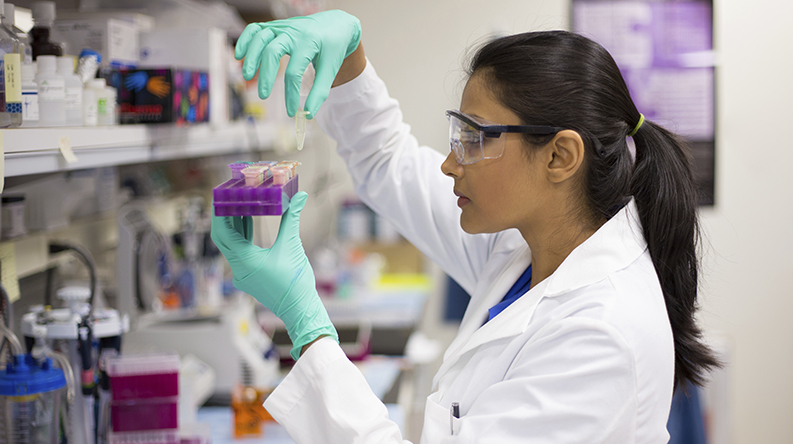When you look at a piece of meat, or a piece of fish, it’s often difficult to tell what species it is. Turn it into a pie or a fish cake and the difficult becomes the impossible. That’s where DNA testing helps. With a sample half a centimetre wide dropped into a little tube of preservative, you can find out if your fish is what the packet says, or if it is something else. It’s not even very expensive.
It all starts with DNA
You probably already know a bit about DNA, how every cell in your body contains the code for building a whole person. You might even have heard about DNA testing our food (after all that’s how they found out about horse meat in lasagnes), but how does it work?
The first thing you need to know is that there are two places in your cells where DNA lives. There’s the DNA in the cell nucleus (the famous bit that codes how to make a person) and tiny little rings of DNA inside things called mitochondria. These are microscopically tiny little structures inside each cell that provide the power. Think of them as a few hundred little batteries powering the cell and you’re not far off.
Each of these mitochondria has its own DNA wrapped into tough little circles so it can replicate itself.
How does that help us to tell the difference between types of fish? Or meat?
Those long strands of DNA in the nucleus are really, really long. The cod genome is made up of the same four letters that make up the genetic code, C, A, G, and T and it’s about 830 million letters long – the same as a stack of books nine metres high (about 30 feet)1. You also only get one copy per cell.
You need something shorter, with lots of copies per cell and that’s where those little circles of DNA in mitochondria come in handy. Because you get hundreds of copies in each cell, you don’t need many cells to test. That’s particularly helpful if you have a really small sample.
Googling through DNA
Step back from fish for a moment and imagine we have two USB memory sticks, or those little cards that go in the back of a camera. One is full of Shakespeare, the other one is full of poetry by Wordsworth. But we don’t know which is which. We could read the whole thing, but that’s slow and expensive. DNA barcoding looks for a simple passage, a bit like running a google search. If we search for “I wandered lonely as a cloud…” and find it, then we’ve got the Wordsworth collection. If it finds “Romeo, Romeo, wherefore art thou Romeo?” we can be pretty confident that the memory stick contains Shakespeare.
The same thing happens when we test a piece of fish – albeit without the romantic poetry. The DNA barcode is located in a specific sequence of DNA about 500 letters long, and made up of those same four letters, C, A, G and T.
By looking for these short barcodes, you can tell if your sample is a cod, a haddock, or a cow. All you need is a reference library of accurate samples, a small piece of your mystery fish and a friendly independent laboratory who can carry out the test.
How does the MSC use DNA testing?
According to Miguel Pardo at Azti in Spain, nearly a third of fish worldwide is mislabelled2. MSC's Chain of Custody Standard makes sure that doesn’t happen in MSC certified fish.
DNA testing is just one of the checks we use to make sure the fish in the packet is the same as the fish on the label. That helps us to make sure MSC certified companies are following the rules on species labelling. It means that when you buy a piece of MSC labelled cod, you can be sure that it is cod you're eating.
Watch a short film about the MSC’s DNA testing program.
1 http://groups.ischool.berkeley.edu/archive/how-much-info/datapowers.html
2 Pardo, Jimenez and Perez-Villarreal (2016) compared a total of 51 papers on seafood labelling and found an average mislabelling rate of 30%.

